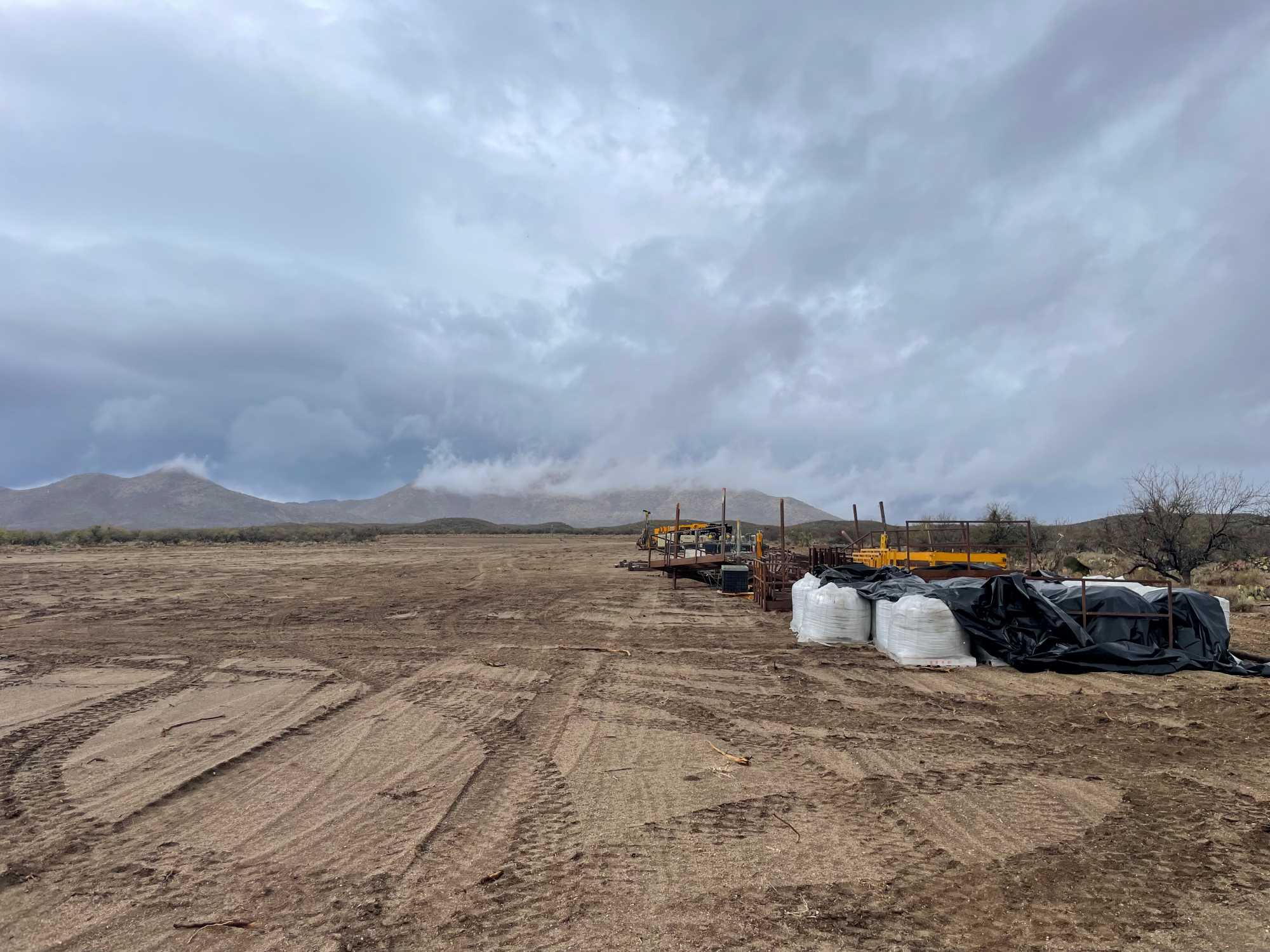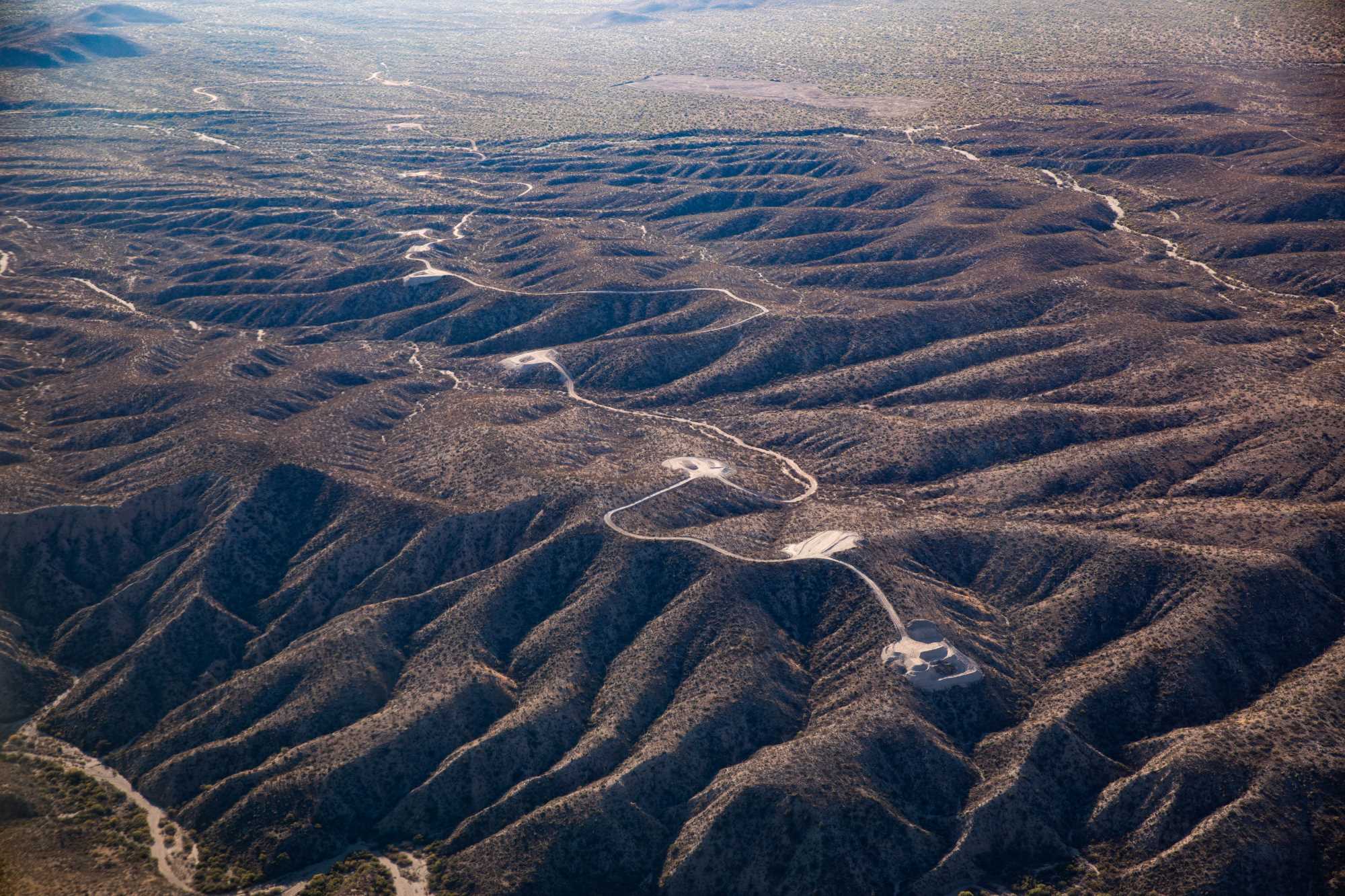Latest Project Update
“Southwest tribes ask 9th Circuit to revive challenge to high voltage transmission line,” Joe Duhownik, Courthouse News Service, via the Tucson Sentinel.
“A Ninth Circuit panel appeared likely Wednesday to reverse the dismissal of a challenge to construction of a high voltage power line through Indigenous historic and cultural sites…”
more updatesOral arguments in the Tohono O’odham Nation’s case in the 9th Circuit Court will be Wednesday, 3/26/25, in the Ceremonial Courtroom, Sandra Day O’Connor U.S. Courthouse, Phoenix AZ. The session starts at 9:00 a.m.; the Nation’s case will start about 9:50. Case number 24-3659
We have updated our media resources page to include PDFs of response letters from the New Mexico State Director for USBLM. One, dated 9/9/24, is in response to our communication regarding inadequate erosion control on SunZia roads and disturbance areas. The other, dated 2/4/25, claims that the unilateral USBLM decision to allow the construction of the RioSol companion line is purely “administrative” and not subject to public or Tribal consultation or further review.
Archaeology Southwest, Cascabel Conservation Association, Center for Biological Diversity, Lower San Pedro Watershed Alliance, Sierra Club, and Tucson Audubon Society sent a letter to Pattern Energy, USBLM, AZ State Land Department, Pima County Commissioners, and Cochise County Commissioners requesting that SunZia implement adequate erosion control measures. The letter documents significant erosion on SunZia’s access roads and disturbance areas in the San Pedro Valley. Tucson Sentinel described the letter and project concerns in recent reporting.
Archaeology Southwest Statement on New York Times Guest Essay by Robinson Meyer, “It Takes Too Many Studies for the Government to Do the Right Thing”: “In our capacity as a plaintiff in this ongoing litigation—the substance of which is mischaracterized by Meyer in the opinion piece—we assert the following…” Read more »
On May 6, 2024, CCA joined the Center for Biological Diversity in sending a letter to both the BLM and the USFWS requesting their attention to SunZia’s violations of their Plan of Development relative to nesting birds. On May 8, 2024, they published a press release regarding Pattern’s failure to comply with terms of their permits.
The San Carlos Apache Tribe and the Tohono O’odham Nation on April 24, 2024, appealed a Tucson federal court’s April 16, 2024, decision that denied the Tribes’ request for a preliminary injunction to stop construction of the SunZia Transmission Project through 50 miles of the San Pedro River Valley. Read the press release »
AP: US court rejects a request by tribes to block $10B SunZia energy transmission project in Arizona. Read more »
InsideClimateNews and Tucson-based AZ Luminaria have published an article focused on local opposition to the SunZia project and our lawsuit.
The Cascabel Conservation Association and the Center for Biological Diversity recently sent a letter to the US Fish & Wildlife Service regarding SunZia’s apparent reversal of commitments per the Migratory Bird Treaty Act and Biological Order.
The SunZia suit features prominently in Maxine Joselow’s in-depth reporting for the Washington Post on the collision between clean energy projects and lands of cultural and spiritual importance to Tribes. Read more »
The Tohono O’odham Nation, San Carlos Apache Tribe, Center for Biological Diversity, Archaeology Southwest, and citizen-intervenor Peter Else have filed a formal complaint with the Arizona Corporation Commission regarding SunZia/Pattern Energy’s failure to complete required cultural impact studies prior to construction. Read the complaint »
From the Associated Press: “A federal judge is being asked to issue a stop-work order on a $10 billion transmission line being built through a remote southeastern Arizona valley to carry wind-generated electricity to customers as far away as California.” Read more »
The San Carlos Apache Tribe and the Tohono O’odham Nation, joined by Archaeology Southwest and the Center for Biological Diversity, filed suit against the US Federal Government in the US District Court of Arizona. Our complaint alleges that the US Bureau of Land Management (USBLM) failed to complete steps required by the National Historic Preservation Act (NHPA) prior to authorizing construction of the SunZia Southwest Transmission Project (SunZia). Read more »
MEDIA RESOURCES here.
On January 17, 2024, the San Carlos Apache Tribe and the Tohono O’odham Nation, joined by Archaeology Southwest and the Center for Biological Diversity, filed suit against the US Federal Government in the US District Court of Arizona. Our complaint alleges that the US Bureau of Land Management (USBLM) failed to complete steps required by the National Historic Preservation Act (NHPA) prior to authorizing construction of the SunZia Southwest Transmission Project (SunZia).
Why Archaeology Southwest Is Involved
Archaeology Southwest joined this lawsuit because of USBLM’s many failures to use its discretion to spare the San Pedro Valley—a place of exceptional beauty and historical, cultural, spiritual, and ecological importance—from industrial fragmentation. As a Tucson-based nonprofit with deep ties to the valley community, Archaeology Southwest has long urged USBLM to route the transmission line alongside existing infrastructure.
We are honored to support the Nation and Tribe in demanding that USBLM revisit its decisions to route the SunZia powerline through the San Pedro Valley. The valley is replete with places that are significant in O’odham, Apache, Hopi, and Zuni culture and religion.
The case for protecting this landscape is clear: The San Pedro—Arizona’s last free-flowing river—and its valley embody the unique and timely story of social and ecological sustainability across more than 12,000 years of cultural and environmental change.
Since the 1990s, Archaeology Southwest has worked with hundreds of Tribal leaders, San Pedro Valley residents, and volunteers to bring this story to light by documenting and assessing the Valley’s heritage places and present-day significance. Archaeology Southwest’s collaborations continue to highlight the valley’s ongoing connections to diverse peoples. Ancestral Apache, O’odham, Hopi, Zuni, and early Hispanic and Anglo belongings, homes, farms, trails, communal spaces, and resting places bear testimony to the valley’s interwoven human and natural history.
Why a Lawsuit?
The necessity of filing this lawsuit hinges on recent history: Beginning in 2009, immediately following publication of the SunZia proposal, Archaeology Southwest joined the San Carlos Apache, Hopi, and Zuni Tribes and the Tohono O’odham Nation in asking USBLM officials to follow applicable law, consider the extraordinary values embedded in the San Pedro Valley, and find a less-harmful route. Tribes and other parties concerned with the massive, landscape-scale impacts of SunZia have been clear and consistent in advising USBLM to duly consider the San Pedro one of America’s “last great places,” as designated by Life Magazine in 1993.
In particular, the Tribes have repeatedly sought to assist USBLM in applying the NHPA in evaluating the San Pedro Valley and special places within the valley as traditional cultural places (TCPs).
Instead of following its own rules, honoring its obligations as the Tribes’ trustee, or heeding our advice, USBLM authorized SunZia construction activity in the San Pedro Valley on September 26, 2023. Federal law and policy require BLM to identify TCPs, then plan projects to avoid and reduce harms to them, but BLM continues to insist on skipping the first and most important step.
Despite evidence-based requests to appreciate the ecological, cultural, and historical context for any alteration of the San Pedro Valley, and in the face of advice from other state and federal agencies, USBLM embraced the SunZia owners’ preferences and approved the route least costly to the owners and most harmful to the San Pedro Valley and its TCPs, as well as to the people who rely upon the river corridor and the surrounding landscape for material sustenance and for senses of place, security, and belonging.

The apparent USBLM prioritization of profit-driven interests over the concerns of the Nation and Tribes, and over the rules for preserving heritage places, has obliged Archaeology Southwest to, in the words of Tohono O’odham Nation Chairman Verlon Jose, “Use all lawful means to oppose this reckless powerline.” In accord with Archaeology Southwest’s mission, we honor commitments to work with Tribes, apply archaeological information for social good, and advocate for the protection of the San Pedro Valley, which has been home and heartland to communities and families since time immemorial.

Complaint Filed with AZ Corporation Commission
We and our co-plaintiffs are asking the Arizona Corporation Commission (AZ CC) to enforce the Certificate of Environmental Compatibility (CEC) it approved on February 22, 2016. That document requires the SunZia applicant to complete a cultural landscape study and to complete and submit the historic property treatment plan for the Arizona section of the power line prior to commencement of construction. (Read the AZ CC Docket here.)
In accord with industry standards—and multiple requests from Tribes and Archaeology Southwest dating back to the early 2010s—a cultural landscape study is the essential first step in identifying traditional cultural places. The study should have been completed a decade ago and in close collaboration with the Tohono O’odham Nation, San Carlos Apache Tribe, Zuni Tribe, Hopi Tribe, and other affected Tribal Nations.
Because the cultural landscape study was not completed and no comparable effort was made to identify traditional cultural places, those places are not included in the historic property treatment plan. The historic property treatment plan that the applicant submitted to the AZ CC is incomplete—and fatally flawed. The treatment plan is also inconsistent with the terms of the programmatic agreement used by the U.S. Bureau of Land Management and the applicant to claim compliance with the National Historic Preservation Act, something also required by the AZ CC.
For these reasons, we are demanding that SunZia construction stop in Arizona until the cultural landscape study is completed; the traditional cultural places are identified and assessed; the appropriate avoidance and impact mitigation measures are planned and implemented in accord with the programmatic agreement; and all other legal requirements are met.
Details
Related to This
-
File MEDIA RESOURCES
-
File San Pedro Film
-
Project San Pedro Ethnohistory Project